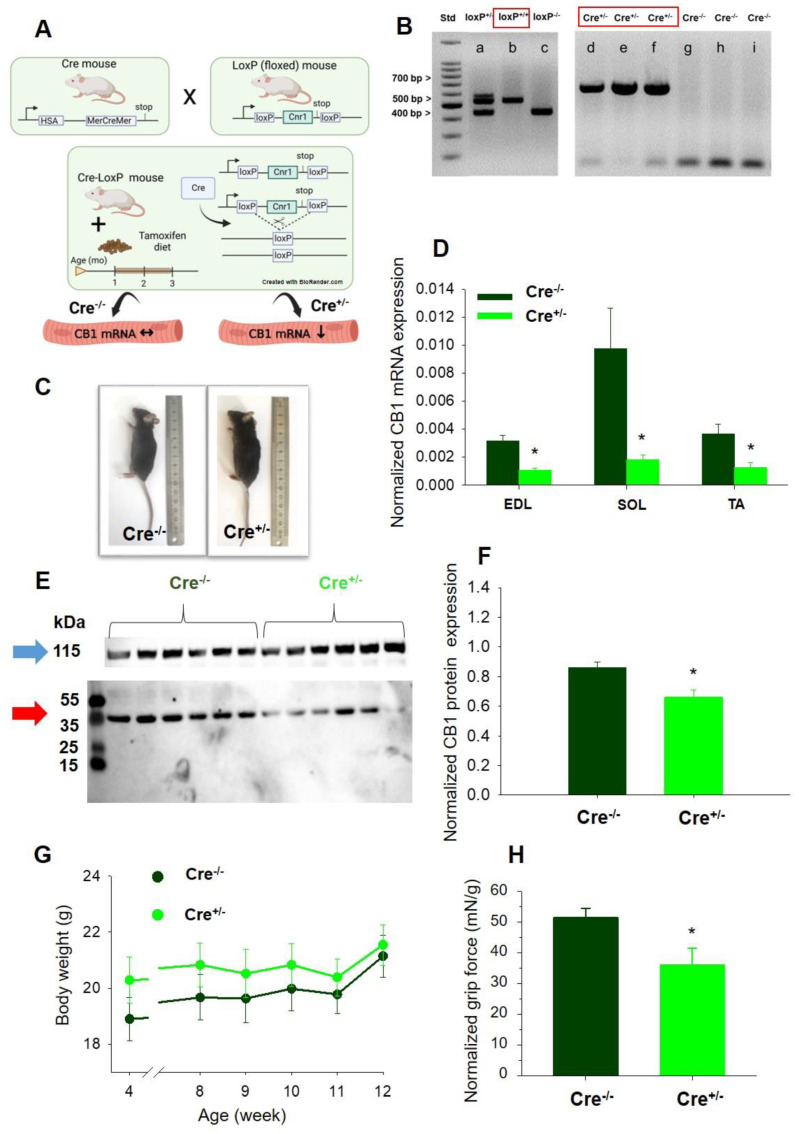Figure 1.
Skeletal muscle–specific knock–down of CB1R. (A) Schematic diagram of muscle-specific CB1R-knock-down breeding strategy. (B) Validation and identification of the loxP+/− (a), loxP+/+ (b), loxP−/− (c), Cre+/− (d, e, f), and Cre−/− (g, h, i) mice via agarose gel electrophoresis. (C) Images of Tamoxifen-fed Cre−/− and Cre+/− mice (all of them loxP+/+) at age of 3 months, following 2-month Tamoxifen diet period. The mice did not show any gross visible morphological defects and had normal behavior and movement. (D) Pooled data of the normalized CB1 mRNA expression levels in different muscle types (EDL, SOL, and TA) of Cre−/− and Cre+/− mice. 12 littermates (6 Cre−/− and 6 Cre+/− mice) were examined from 3 litters (breeding groups). PPIA (Peptidylprolyl Isomerase A) was used as internal control. (E) Representative Western Blot performed on TA muscles illustrating CB1 protein expression (red arrow, ~45 kDa) and α-actinin (blue arrow, ~115 kDa) that was used as normalizing gene. (F) Bar graph depicting average normalized CB1 protein level examined for both samples in 4 independent experiments. (G) Change in body weight during the 2-month Tamoxifen diet monitored for mixed gender Cre−/− (N = 9) and Cre+/− (N = 13 mice). (H) Grip force normalized to body weight in Cre−/− and Cre+/− mice (N = 4 for each group). * p < 0.05.

